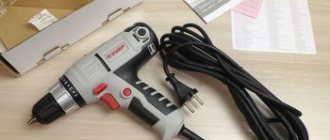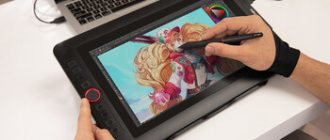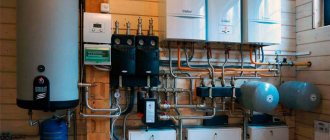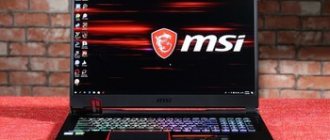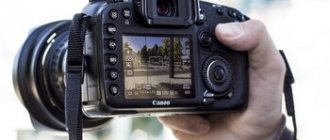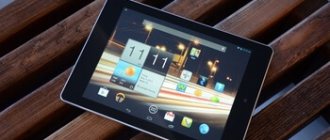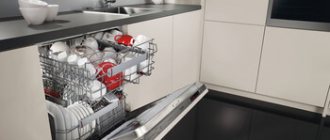Introduction
Today, a quadcopter without a camera is unlikely to interest anyone, so manufacturers of household UAVs are trying to keep up with the times and equip all their products with cameras. Various Internet trading platforms offer a huge number of quadcopters with a camera, and of course, a person who has decided to purchase a drone for the first time, looking at this abundance of drones, has a question: “Which quadcopter with a camera is better?”
To ease the pain of choice, we decided to select the ten best budget quads with a camera in the price range up to $300. Why up to $300? Because in this price range there are products that are best suited for getting the first trial experience. Having gained experience in piloting drones from the budget segment, you can safely move on to more expensive models. The selection was carried out according to such criteria as: popularity in the hobby, price, quality of the product, its functionality, quality of photo and video material. Let's start with the last one - 10th place. For those who do not have time to fully familiarize themselves with the rating, we have prepared the table below.
comparison table
| Name | Camera | Flight time | Control range | Altitude hold | FPV | Price | Review |
| Syma X8HW | 1MP | 7 min | 70m | Yes | 2.4GHz Wi-Fi | 105$ | There is |
| Syma X8HG | 8MP | 7 min | 200m | Yes | No | 120$ | There is |
| Xiaomi MiTu | 2MP | 10 min | 50m | Yes | 5GHz Wi-Fi | 60$ | There is |
| Hubsan X4 H502S | 720P | 12 min | 200m | Yes | 5.8GHz analog without latency | 120$ | There is |
| Ryse Tello Drone | 5MP | 13 min | 100m | Yes | 2.4GHz Wi-Fi | from 99$ | There is |
| Syma-W1 (PRO) | 12MP FHD | 18 min | 250m | Yes | 2.4/5GHz Wi-Fi | from 143.99$ | There is |
| MJX Bugs 5W | 8MP FHD 1/3.06″ CMOS | 15 minutes | 300m | Yes | 5GHz Wi-Fi | from 130$ | There is |
| Wltoys XK X1 | 5MP FHD CMOS | 17 min | 500m | Yes | 5GHz Wi-Fi | from 149$ | There is |
| JJRC X12 AURORA | 12MP FHD 1/2.7″ CMOS | 25 min | 1.2km | Yes | 5GHz Wi-Fi | from 239$ | There is |
| DJI Mini SE | 12MP 2.7K 1/2.3″ CMOS | 30 min | 4 km | Yes | 2.4GHz/5.8GHz Wi-Fi | from 299$ | There is |
If you think that our rating is missing some model, then tell us about it in the comments below and we will definitely consider it.
Criteria for choosing the best quadcopter
We tried to select models released in the last couple of years, so as not to talk about the Phantom 4 again (but without some veterans of the drone industry, there’s still nowhere in such a top!). The main selection criteria were the characteristics described in detail in the previous article on how to choose a quadcopter. Now we will briefly recall them.
Size
Size means portability. The smaller the drone, the more often you will use it - a proven rule! Super-compact models up to 250 grams are suitable for those who want to carry a drone with them always and everywhere. However, such devices rarely have a high quality camera. Of course, it is impossible to compare the sizes of toy and professional drones, therefore, when giving ratings, we will focus on the adequacy of the size for a specific class of devices. And foldable drones get extra points in this category.
Shooting quality
In 2021, even budget models can shoot in 4K format. Of course, for now this is the exception rather than the rule, but if progress continues at the same leaps and bounds, and toy quadcopters from AliExpress will be able to shoot in real 4K quality (then we will compile a new top).
At this point we will take into account the level of stabilization: a high-quality mechanical stabilization gimbal will benefit any quadcopter.
Flight characteristics
These primarily include speed and controllability. We will not ignore the flight performance in windy weather. Naturally, here again it will be quite difficult to compare some advanced racing quadcopter and a home drone toy - we will note such cases separately.
Flight performance isn't just important for racing drones, although we'll talk about that today too. Photo: phys.org
Flight time
This is a separate criterion, since flight time on a single battery charge is one of the most important characteristics for both consumer and professional drones.
Data transmission and control system (remote control)
Many users do not pay attention to the data transmission system when purchasing, but in vain. The flight distance of your quadcopter, stability of operation and quality of video on the screen will depend on it. Having an advanced system like OcuSync 2.0, which works at a distance of up to 10 km, will be a big plus. It is also good when the drone comes with a separate control panel.
Additional functions
In this criterion, we have combined all the automation and “brains” of modern drones that make life easier for the user.
With the help of automatic flight modes, both beginners and advanced users will get high-quality video. And thanks to the obstacle avoidance system, you can avoid the quadcopter colliding with large objects, although it should in no way be considered as a replacement for learning how to fly a drone.
So, let's move on to the quadcopters themselves: we talk about the best budget, mid-segment and high-end models, at the same time rating them on a five-point scale.
4th place: xiaomi fimi x8 se quadcopter
Xiaomi, a well-known Chinese company that began its journey with the production of smartphones, today releases to the market a fairly high-quality and popular budget quadcopter model costing up to $500, equipped with a barometer, GPS navigator, 3-axis stabilizer, 4K camera, with a flight range declared by the manufacturer up to 5 km (maybe further), maximum flight time 28 minutes, altitude – 500 m.
See about copters: Quadcopter Yizhan Tarantula X6 (JJRC H16)
Equipment and characteristics
- When folded, the quadcopter measures 20.5 cm x 10 cm x 7.5 cm (372 mm when unfolded).
- The 3-axis gimbal is more robust than the DJI Mavic Pro.
- A 12 MP camera from Sony with a bitrate of 100 Mbit/sec allows you to record video at 30 frames/sec, 2K – 60 frames/sec, FullHD – 100 frames/sec, HD – 200 frames/sec.
- Video format: mp4.
- Photo format: JPG.
- Recording is carried out on a micro SD memory card from 8 to 64 GB.
- There is a micro-UBS connector for connecting the copter to a computer.
- Sliding remote control made of high-quality matte white plastic with the ability to connect a smartphone up to 21 cm wide.
- The quadcopter control frequency is 5.8 GHz.
- Video transmission frequency is 2.4 GHz.
- The remote control takes just over 2 hours to charge.
- Battery capacity 3900 mAh.
- Three different cables for connecting tablets and smartphones to the remote control.
- A 13V - 3A charger charges a completely discharged battery in 1 hour 40 minutes.
- Four propellers (no spares).
Flight preparation and flight
Turning on is done by pressing the button on the quadcopter with one short and one long press. Then attach the propellers to the beams (it's worth noting that this is done quite easily).
The smartphone is inserted into the remote control: select the connection type “media device (MTP)” on the pop-up message, which does not always appear on some smartphone models. Then you need to pull out the USB cable and insert it back into the remote control so that it appears. If a sufficient number of GPS satellites are not found, the copter will be guided by optical and ultrasonic sensors.
The compass must be calibrated before each flight, for which you should make sure that there is no magnetic interference in the area where this task is performed, which is indicated in the running application by the “the Amount of Magnetic Interference” indicator, which “gives” a green light if everything is in order. ok. If it is red, you should move, changing your dislocation.
We take the drone by the blades, lift it horizontally in front of us with the camera facing us, and slowly rotate it clockwise until the green light on it goes out, after which we turn it over vertically - the camera is looking up - and also rotate it until until the red light goes out.
It is worth noting that calibration may not work the first time (and sometimes not the first time).
To prevent our drone from tilting, it is advisable to rotate smoothly and with slight acceleration. If everything worked out, you should check the functionality of all systems in the “Drone Status” menu. If all systems are normal, we are ready to launch. You can also calibrate the gimbal and set the gimbal tilt speed. In addition to this, the functionality allows for advanced camera settings (ISO, contrast, white balance, etc.).
It is preferable to press the auto-take-off button on the remote control when launching for the first time, and it is not recommended to completely trust the drone’s automatic landing – it’s still better to do it manually.
Return settings can be changed both before and during the flight; and it is recommended to set the return altitude after takeoff depending on the terrain: for a building area - 50 meters, a park area - 40 meters (and not the maximum stated in the application - 120 m).
This is due to the fact that if the signal is lost, the copter rises to a given height, from which it will begin descending to the return point in order to land before the battery runs out. Moreover, it is advisable to enable the auto-landing function when the battery charge level reaches its minimum.
Algorithm for signal loss (“Failsafe”):
- Hover – the drone hovers in the air;
- Land – landing;
- RTH – return home: take-off point or current location.
- Waypoint – we set a route of points (radius 1 km) with a flight altitude for each of them, while we can set a point of interest (object of shooting) and not even lift the drone into the air. The specified route can be saved in history.
- Dronie – a smooth distance from the subject of shooting, showing a panorama of the area. You can set the receding speed and distance.
- Smart Track – tracking mode (capable of capturing an object moving at speeds up to 60 km/h): from behind; parallel (along the movement of the object); in place (at a given height); around an object at a given speed.
- Tap-Fly - movement to a point selected on the map of the area at a given speed with the ability to track whatever your heart desires, as far as the angle of rotation of the camera allows.
- Orbit – movement around a given point, while you need to hover over it, fixing the position of the drone (after which we indicate the radius, speed, direction clockwise or counterclockwise).
- Spiral – movement in a spiral: fix the shooting point and set the departure distance. The camera angle remains fixed.
- Cinematic mode – cinematic mode for soft and smooth shooting.
- Tripod – movement at a speed of no more than 1 m/s. Suitable for time lapses and long exposure photography.
- Course Lock - similar to Tap-fly, but instead of the destination point, you select the direction in which the copter will move. You can rotate along its axis and change the position of the camera.
- Fixed-wing - behavior is similar to a device with a fixed wing: movement is like on an airplane due to the fact that the suspension is fixed in a horizontal plane (something like flying on a flight simulator), while the height must be at least 5 m.
- SAR is a mode for carrying out rescue operations with the transmission of the current coordinates of the drone and the ability to use 3x optical zoom (!) of fairly good quality. The fact that zoom is used, if you forgot to turn it off, is not displayed anywhere (suddenly you switched to another flight mode), so you need to go back to SAR mode and turn it off.
Flight range: in the city from 830 to 2000 meters (then the picture begins to “crumble”), up to 6000 m in the field (the picture disappears at 4000 m).
Flight speed: 59 km/h; in sport mode it reaches 68 km/h.
It is worth mentioning the possibility of periodic firmware updates, which means making additions to photo and video recording modes.
Pros, cons, comments on this model:
- 3-axis stabilizer
- Flight time is longer than DJI Mavic Air
- Price is cheaper than DJI models
- Maneuverability
- The quality of the materials from which the quadcopter is made
- Convenient functionality and control panel
- Good video quality (possibility to shoot in 4K)
- Optical zoom without loss of quality
- — There are no obstacle protection sensors
- — When turning the camera, the blades can get into the lens
- — When the flight range is more than 1 km, the image transmission to the screen may be distorted or delayed
- ! There is no photo panorama mode and spherical 360 panoramas, as on the Mavic (however, they may be added with the next firmware update)
- !Weak factory gimbal protection (for transportation), which experienced pilots advise printing according to the drawings of the recommended protection on a 3D printer (the drawing is available on the Internet)
See about copters: Homemade radio-controlled yacht | Peekaboo
Top 3 high-end quadcopters
DJI FPV
Futurism is in every detail, and this applies not only to the appearance of the drone. Photo: ixbt.com
Size: 4 Flight characteristics: 5 Flight time: 3 Data transmission, remote control: 5 Camera: 5 Additional functions: 4 Average score: 4.3
And here is a new product for 2021 - an innovative FPV drone from DJI. FPV stands for first-person view: the drone's camera transmits images to VR glasses worn by the pilot (you can also use a monitor), so it appears as if you are in the drone's cockpit. Thus, the main goal of the new product is interesting flights, and not filming, although this quadcopter can also shoot cool video (4K at 60 fps).
In general, FPV drones and racing on such devices are a whole new eSports discipline and show that collects millions of views. So, DJI FPV is a simple and convenient start for everyone who wants to feel like a real racer of the future.
The kit comes with very cool glasses, a special simulator for learning the elements of FPV racing, and also a real stopcock!
On the other hand, this is not a professional racing drone: it is not as maneuverable and its repair will cost more than self-assembled FPV drones, so this model will not be so interesting for professional racers. The quadcopter can fly for about 20 minutes (in calm weather at a speed of 40 km/h), which is slightly lower than the average performance of drones aimed at video recording.
Although the quadcopter itself could be classified in the middle segment (it costs about the same as Mavic Air 2), complete with FPV goggles and a control panel, which will be an integral part of the experience, the cost of a DJI FPV easily exceeds 100 thousand rubles.
Powervision PowerEgg X Wizard
Splash down right in the city park? Yes Easy! Photo: tomsguide.com
Size: 5 Flight characteristics: 5 Flight time: 4 Data transmission, remote control: 4 Camera: 4 Additional functions: 5 Average score: 4.5
Another unusual drone on our list. The PowerEgg X was first introduced in early 2021 and eventually went on sale in two variants - Explorer and Wizard. We are most interested in the Wizard version, because it is in this configuration that the drone can safely fly in the rain and even land on water.
The quadcopter has a modular design, so it can also be used as a portable gimbal camera.
The drone has excellent flight characteristics and many automatic modes with artificial intelligence algorithms. However, the model also has its disadvantages. While the drone can shoot decent 4K video in good lighting, the 12-megapixel 1/2.8-inch sensor with fixed aperture and fixed focus can't compete with the second-generation DJI Mavic. At the same time, the protective case in the Wizard version somewhat reduces the quality of video recording. In addition, users have complaints about the quality of the application.
DJI Mavic 2 Pro
The Mavic Pro 2 camera is from the famous Hasselblad. Photo: bhphotovideo.com
Size: 4 Flight characteristics: 5 Flight time: 5 Data transmission, remote control: 5 Camera: 5 Additional functions: 5 Average score: 4.8
If you're looking for a professional videography drone that fits in your backpack, the Mavic 2 Pro has virtually no competition. For this top, we chose Pro rather than Zoom, as it is a slightly more sophisticated option in terms of camera, but in all other respects the two versions are identical.
We have already looked at the strengths and weaknesses of the second generation of Mavics, and their main disadvantage is the high price. Of course, a flight time of 31 minutes is still a limiting factor for many applications, but consumer-grade quadcopters cannot yet radically solve this problem. Otherwise, this is an almost ideal drone for photography: a 1-inch 20-megapixel sensor, OcuSync 2.0 connection, a bunch of automatic shooting modes, and an advanced obstacle avoidance system. The Pro 2 is larger than both the first-gen model and the Air 2, but some compromises were made in terms of compactness to achieve a better camera.
Comparing high-end quadcopters
| DJI FPV (racing drone) | Powervision PowerEgg X Wizard | DJI Mavic 2 Pro | |
| Size | 4 | 5 | 4 |
| Flight characteristics | 5 | 5 | 5 |
| Flight time | 3 | 4 | 5 |
| Data transmission, remote control | 5 | 4 | 5 |
| Camera | 5 | 4 | 5 |
| Additional functions | 4 | 5 | 5 |
| Average score | 4,3 | 4,5 | 4,8 |
Once again DJI is at its best! Mavic 2 Pro is a unique model with almost no drawbacks (except for the price): a super camera, a folding body and a bunch of cool automatic shooting modes.
We didn't include the DJI Inspire 2, which many still consider to be the best high-end drone on the market. We did this not because we don’t like it or think the model is unsuccessful. Firstly, this drone is already in all possible ratings. Secondly, this is far from a new model (after all, we tried to include more or less recent drones in the list). Thirdly, for a consumer drone it is really large and the camera for it needs to be purchased separately.
It's a similar story with the DJI Phantom 4 Pro V2.0 - it's not a new model and isn't very portable by today's standards. Although the Phantom 4 Pro V2.0 is still a very advanced quadcopter with an excellent camera and good flight characteristics.
MJX Bugs 12 EIS
bugs 12
Next in the ranking is the MJX B12 EIS quadcopter from one of the leading manufacturers of budget drones. Its features are the presence of electronic stabilization, a camera and electronic zoom, shooting in 4K 30 frames per second, broadcasting video to a smartphone up to 450 m, flight time up to 22 minutes. Like other models in the rating, it has brushless motors and a folding body. There is auto take-off/auto landing, return to take-off point, flight behind the pilot and other smart modes. Weight 549 g.
MJX B12 EIS pros and cons
electronic stabilization and zoom;
shooting in 4K;
foldable and compact;
availability of smart flight modes;
affordable price.
there is no obstacle avoidance function;
short video transmission distance.
The price of this quadcopter is about 16,000 rubles, and you can buy:
Purchase from the official MJX-Russia online store
or on Chinese sites:
Buy on banggood
2nd place: yuneec typhoon h3 quadcopter
The long-awaited brainchild of the Chinese company Yuneec, created together with Leica (who doesn’t know, a world-famous German company, famous for its optics, has been developing and producing for more than a century some of the best proven cameras that allow you to take pictures of incredible quality).
The result of the fruitful work was a hexacopter, externally similar to its predecessor (Yuneec Typhoon H Professional), with a distinctive, significant feature that Leica engineers worked on - the ION L1 Pro camera on a 1-inch CMOS matrix with a resolution of 20 megapixels, allowing you to shoot in ultra-high 4K resolution at 60 fps.
In general, the baby is armed with such optics that the detailed aerial photographs he takes will take your breath away. According to the manufacturer, thanks to the effective suppression of stray light, the camera provides the best image results, especially in critical lighting conditions, and the technical versatility of the camera offers a wide range of capabilities, such as auto exposure bracketing.
As part of this collaboration, Leica created an Adobe DNG profile aimed at image optimization. It is selected automatically (the user will need to install the latest version of Camera Raw software, version 11.3 or higher, on their computer).
So, what features does this model have, besides the fact that it is a 6-motor folding hexacopter:
- has a folding design made of carbon fiber;
- 3-axis mechanical gimbal allowing 360° shooting;
- digital zoom without loss of quality;
- optimized shooting settings functions: focusing, noise, white balance, color rendition, sharpness, ISO, etc.;
- possibility of panoramic shooting, interval shooting, etc.;
- joint control mode (one of the team can stand at the helm, someone can control the camera - although this will require a second similar control panel, which can be purchased separately);
- low noise;
- there are obstacle detection sensors;
- beam LEDs;
- auto take-off/auto landing;
- intelligent shooting modes;
- the ability to shoot hyperlapse video;
- Y-Log profile support (allows you to integrate video materials into projects with other image sources);
- Thanks to the developers' design, data exchange occurs directly between the copter and the remote control - thus, the system does not use cloud data storage, which provides additional protection for your data.
, which the developer offers:
- hexacopter;
- Leica ION L1 Pro camera;
- professional control panel ST16S;
- remote control strap;
- spare antenna;
- 2 batteries;
- Charger;
- SD card;
- USB cable;
- instructions.

